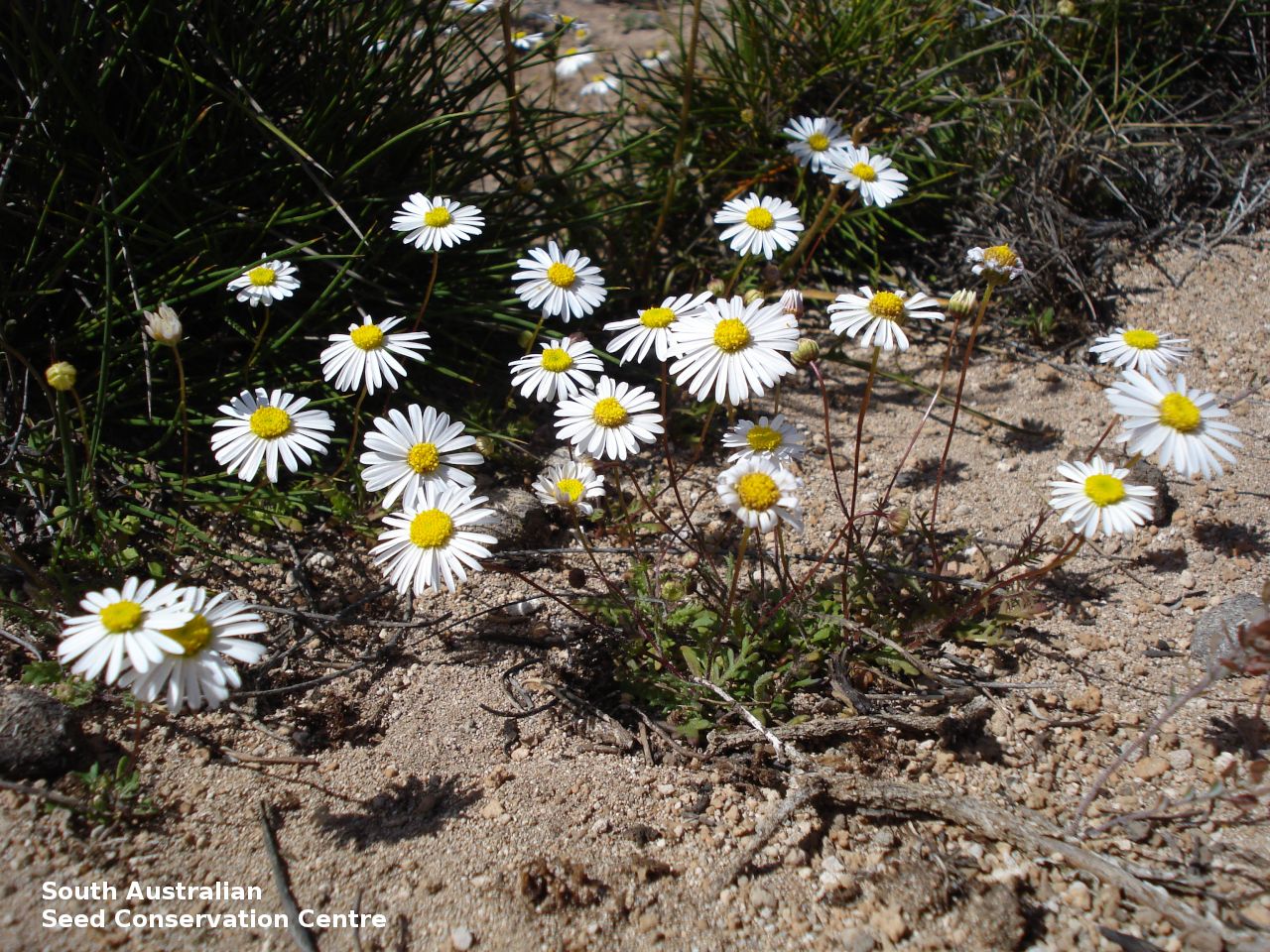
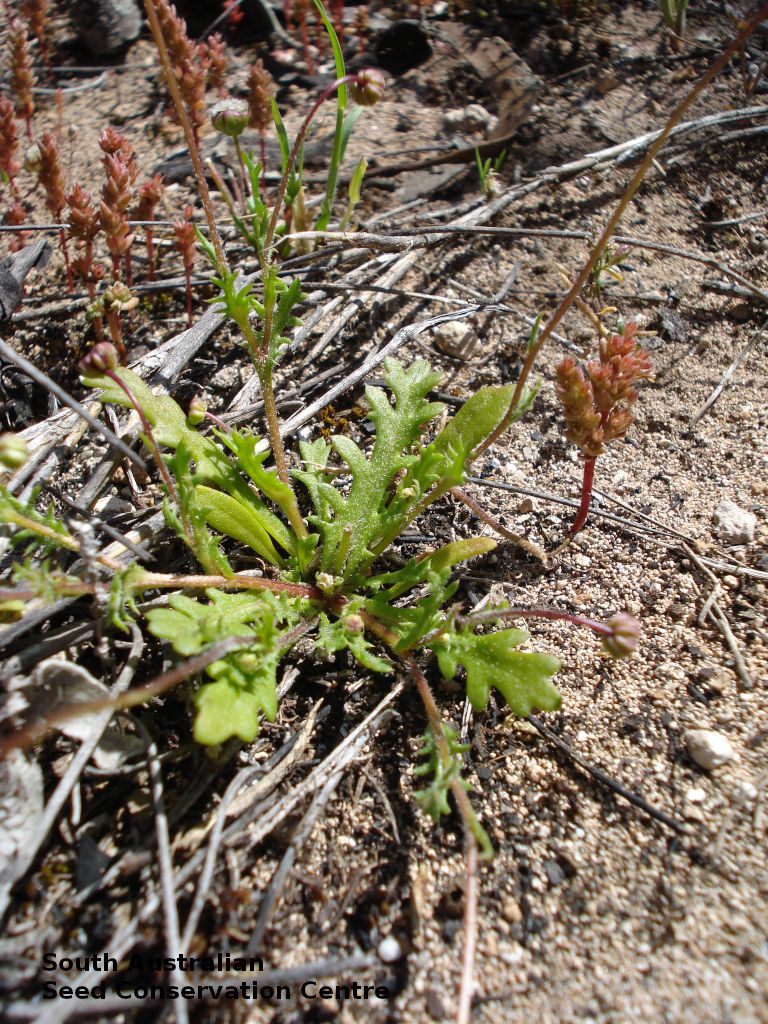
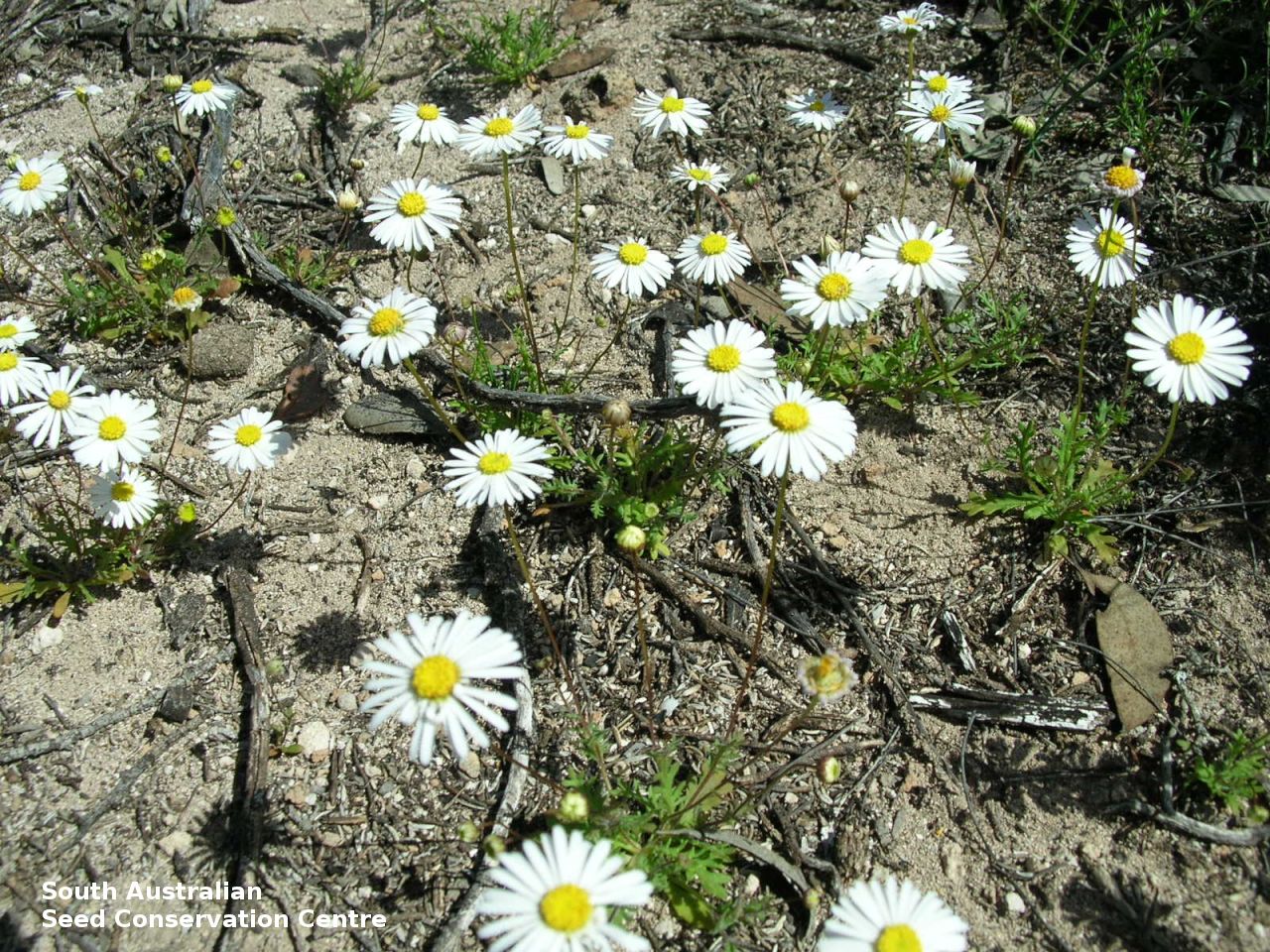
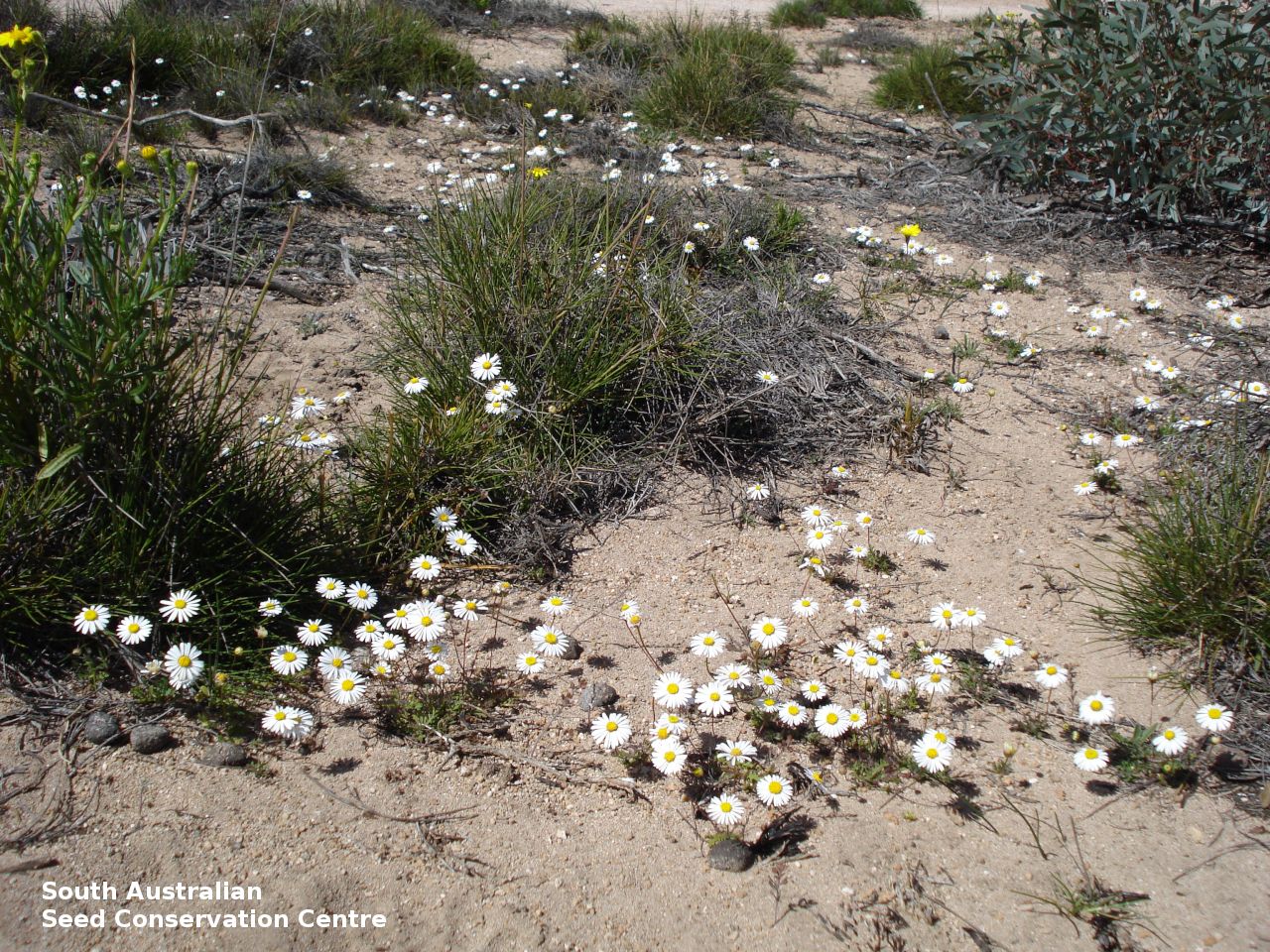
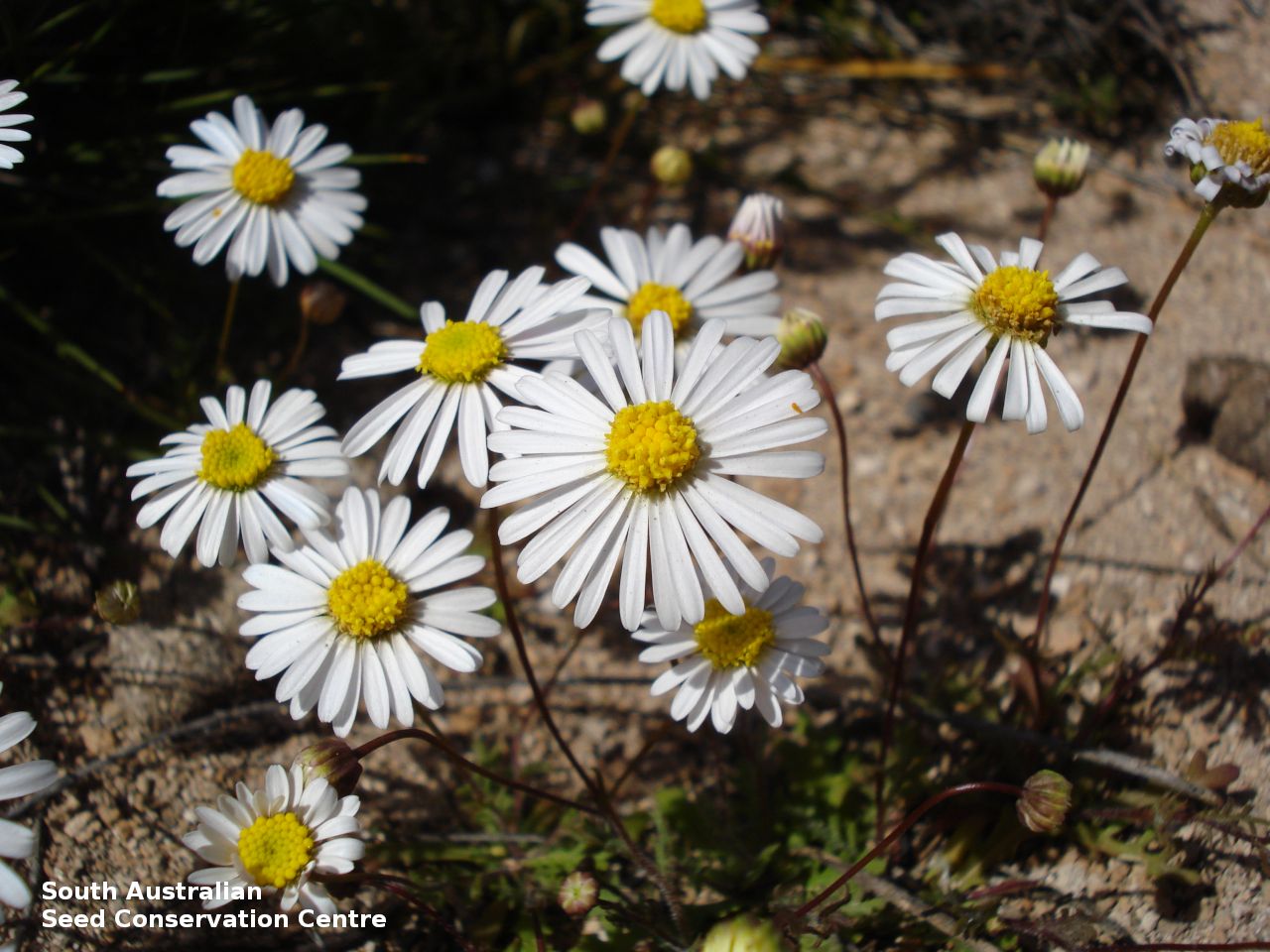
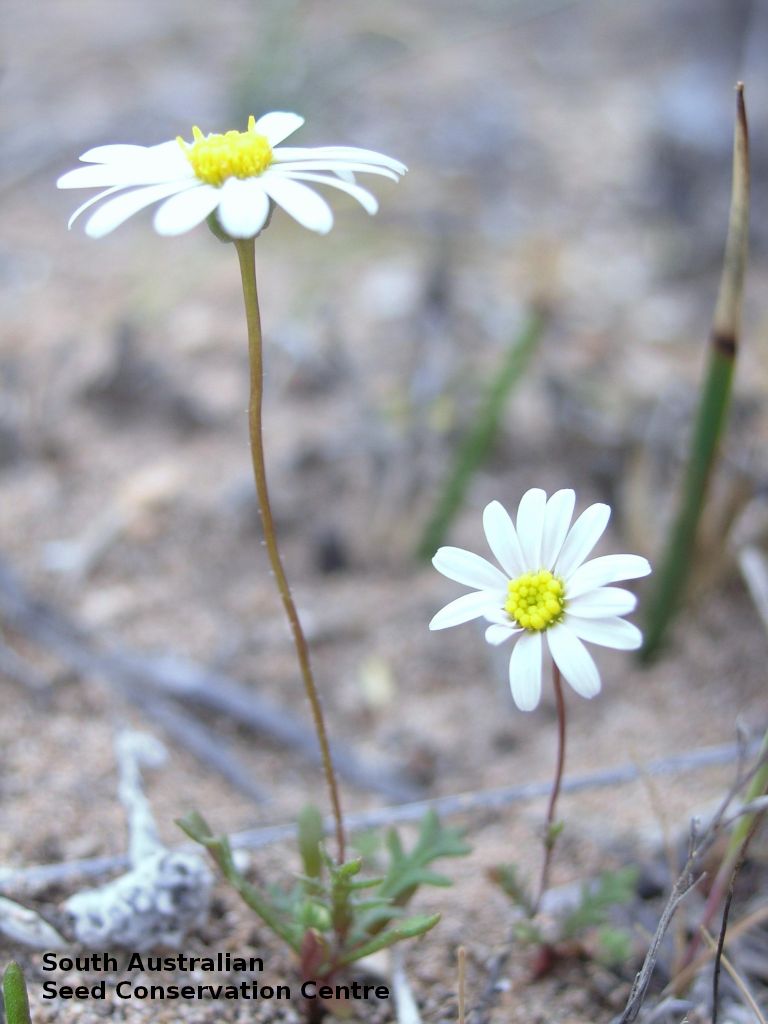
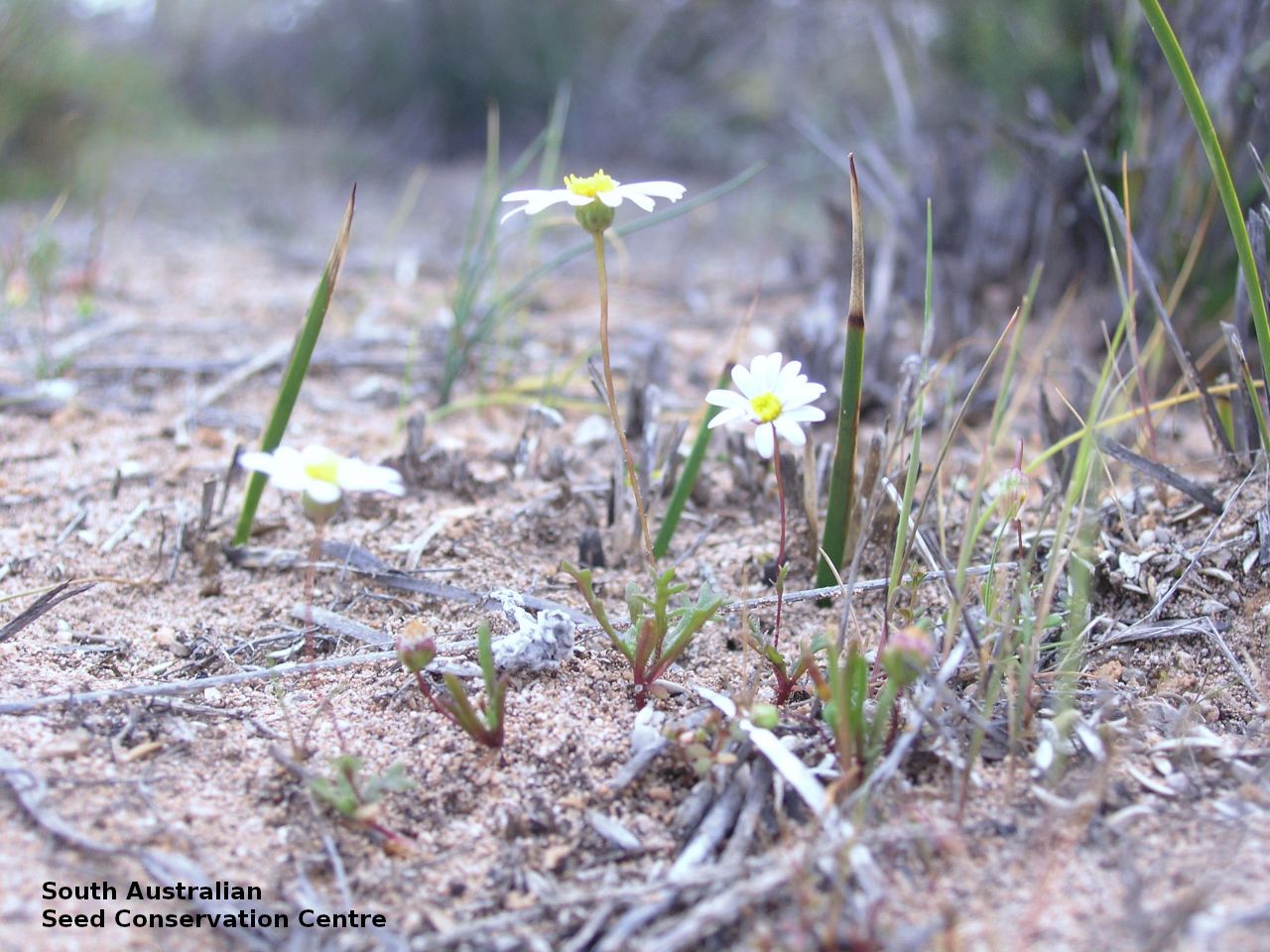
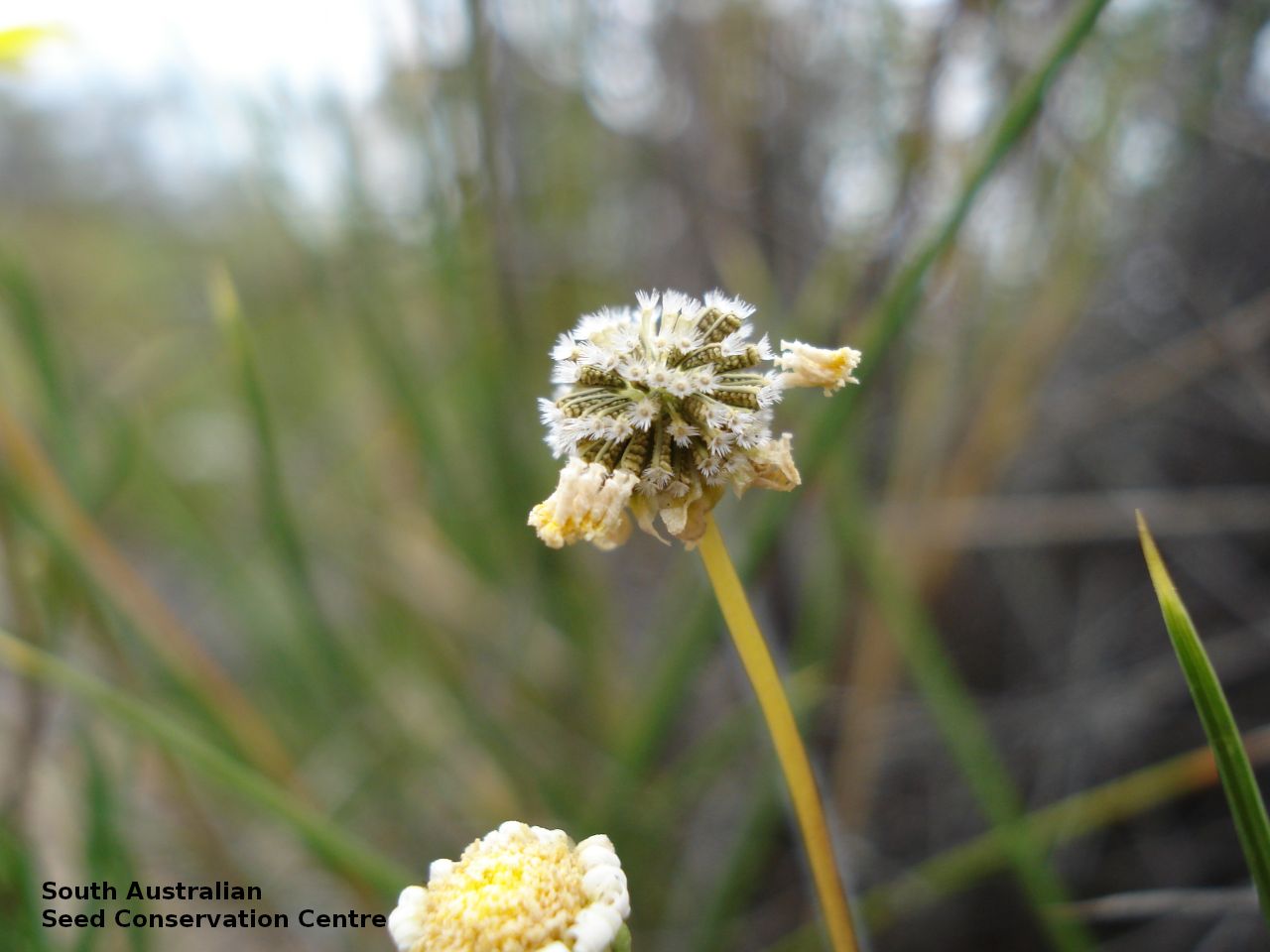
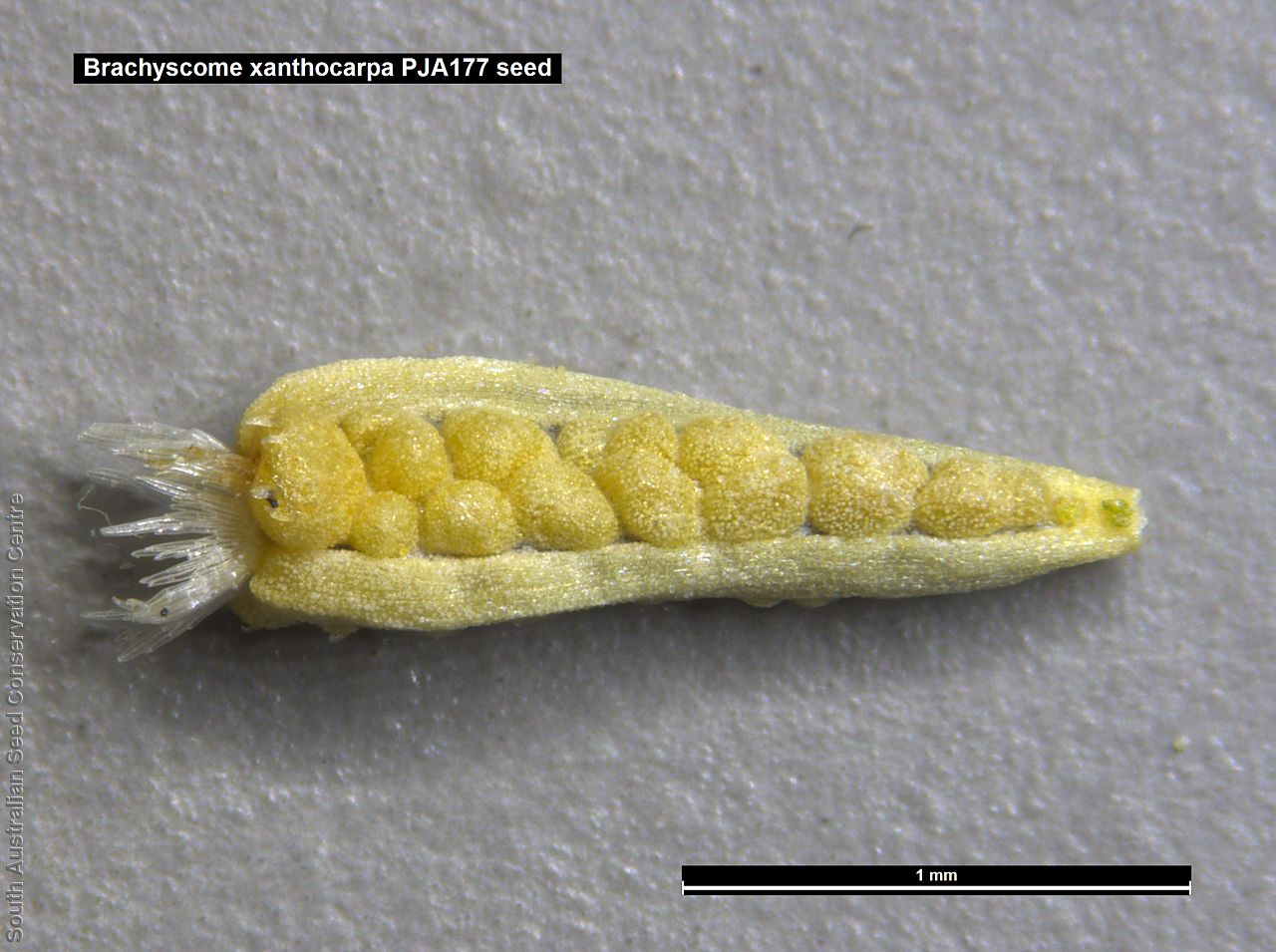
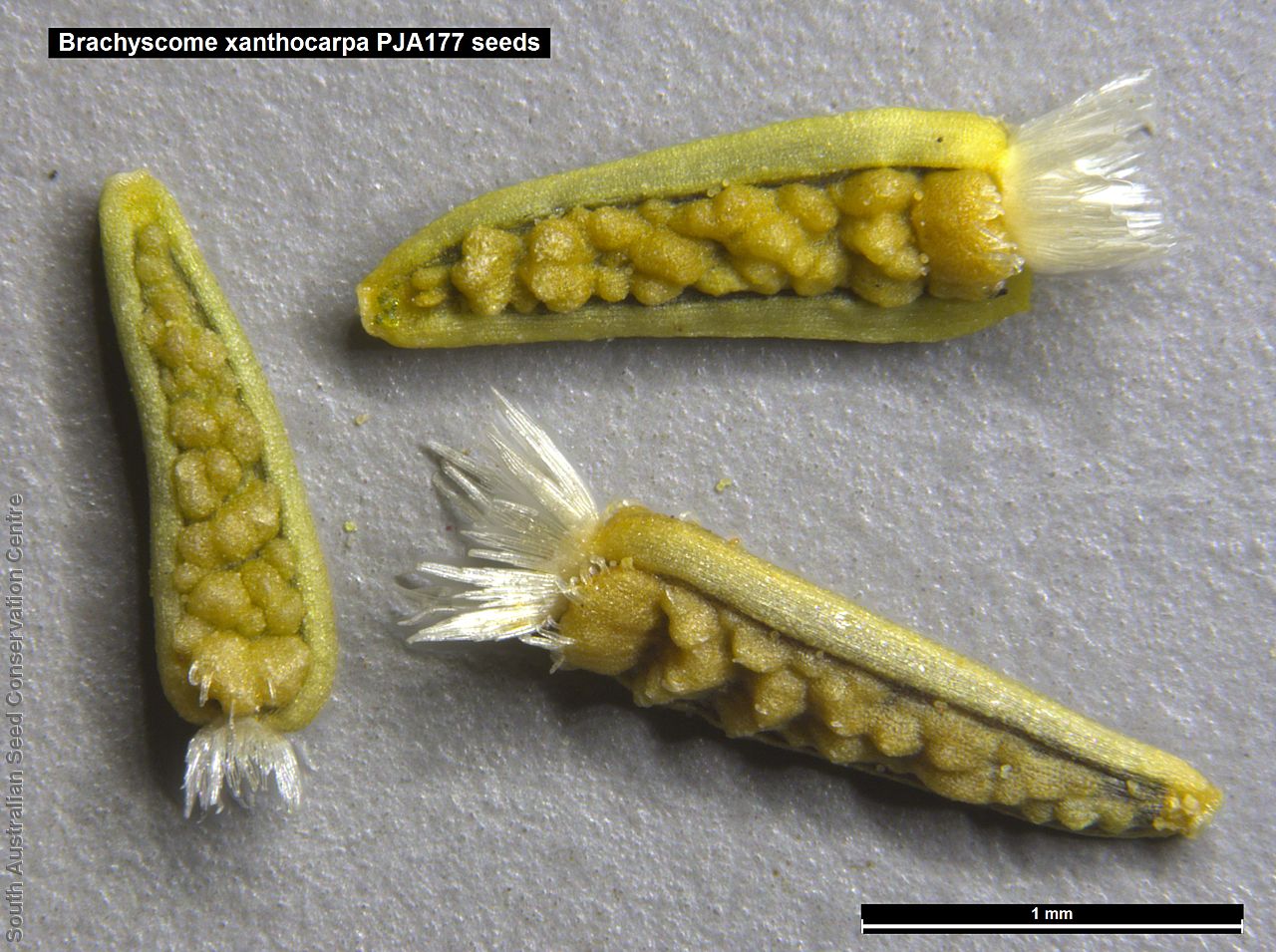
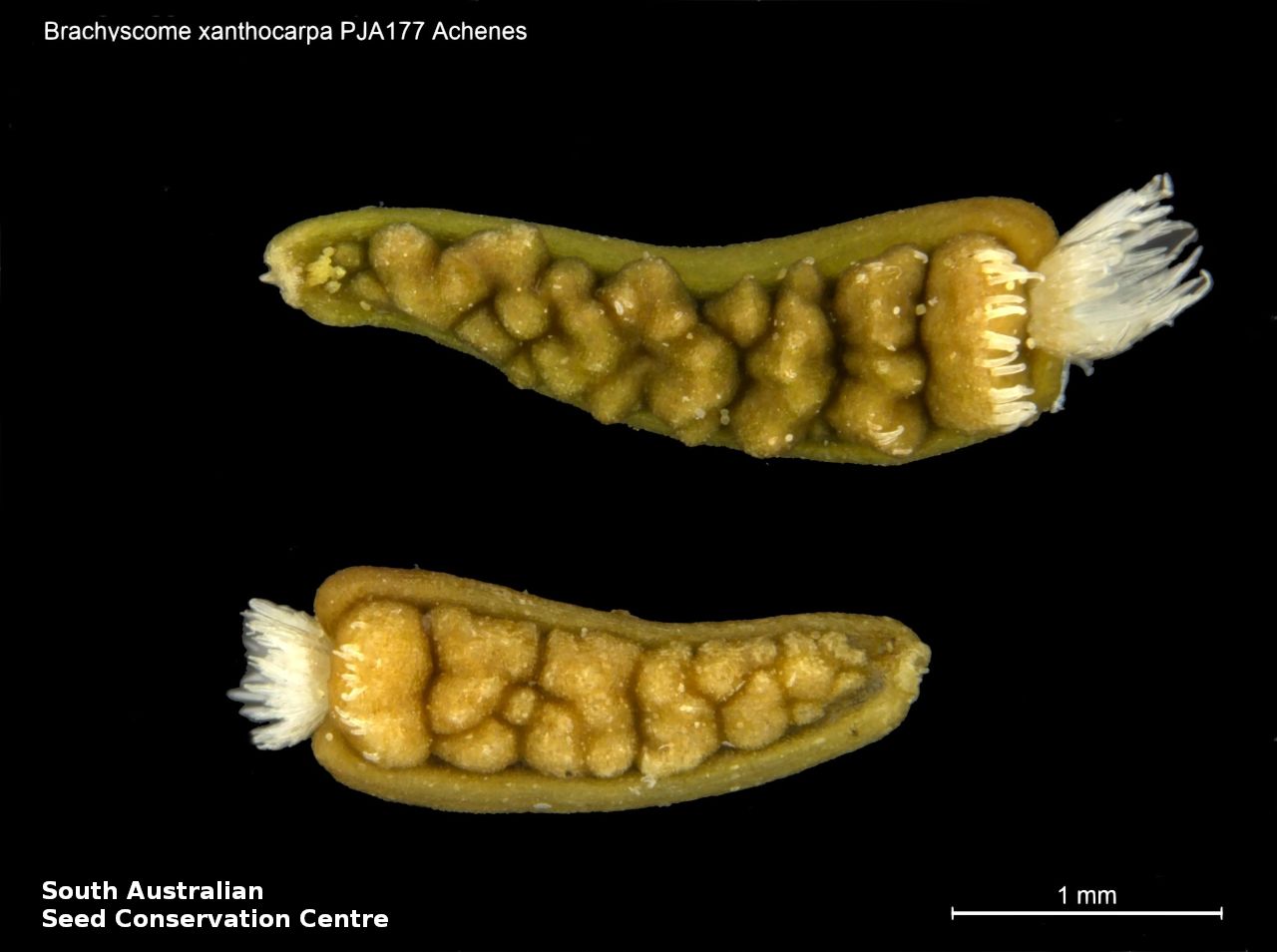
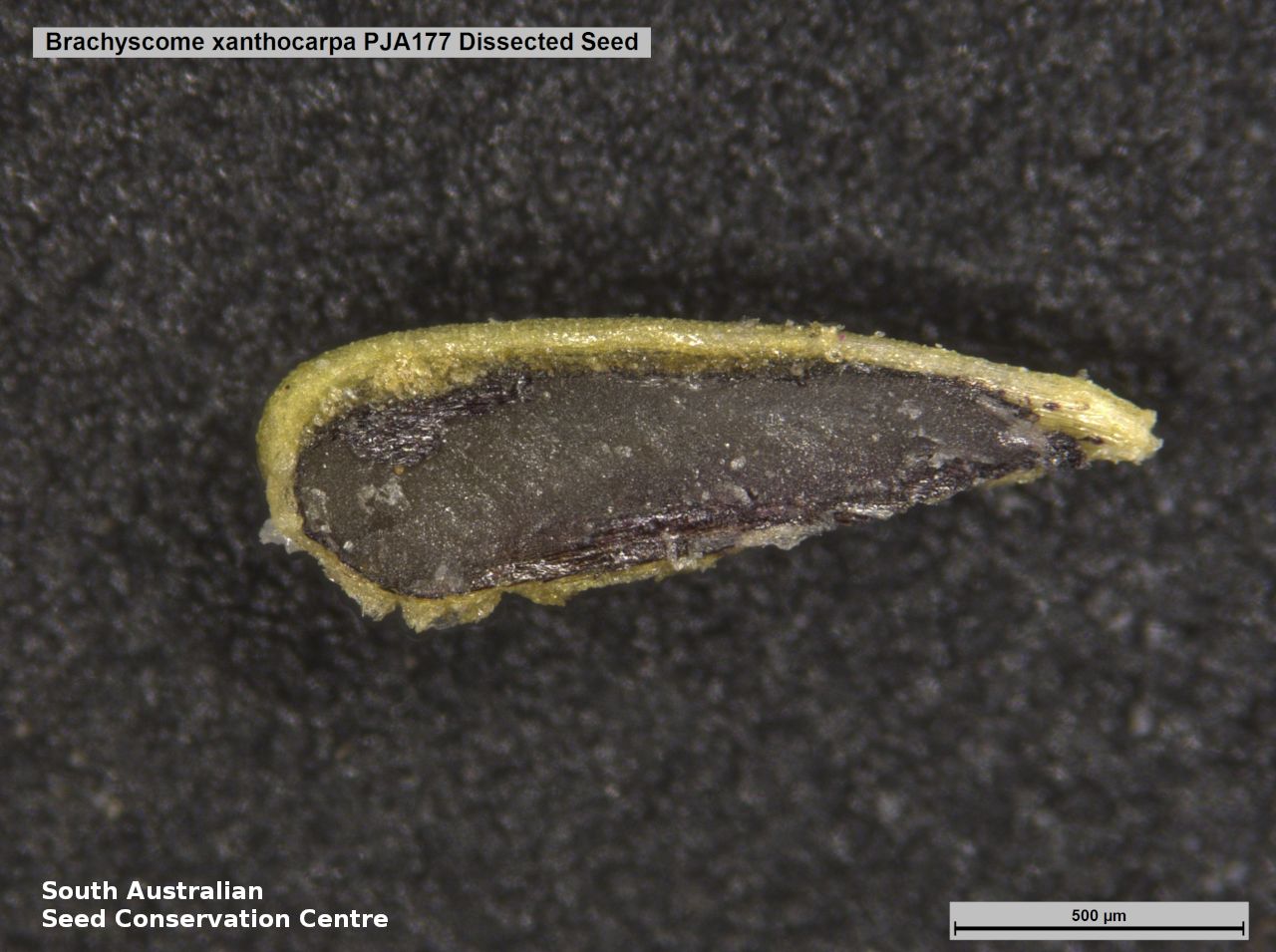

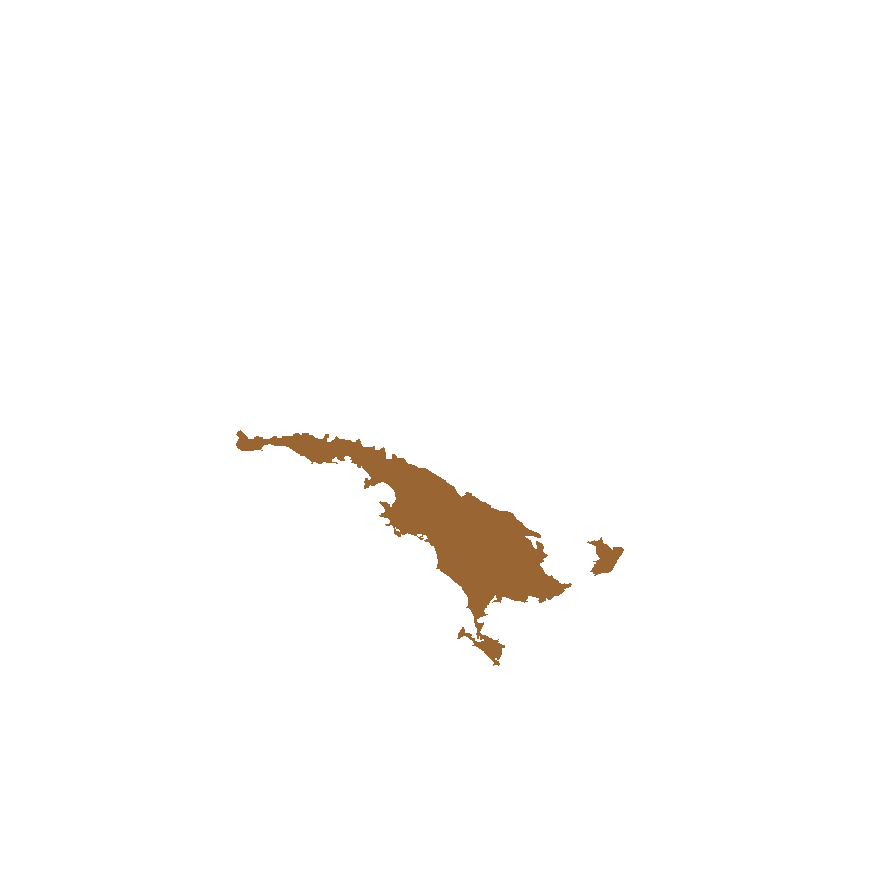
Prior names
Brachycome xanthocarpa
Etymology
Brachyscome from the Greek 'brachys' meaning short and 'kome' meaning hair, referring to the tufts of short bristles or hairs of the pappus. Xanthocarpa from the Greek 'xanthos' meaning yellow and 'carpos' meaning fruit, referring to the distinctive yellow colour of the achenes.
Distribution and status
Endemic to South Australia and confined to the Eyre Peninsula in the Venus Bay/Streaky Bay region and Hincks Conservation Park, growing in mallee on sand dunes. Native. Very rare in South Australia.
Herbarium region: Eyre Peninsula
NRM region: Eyre Peninsula
AVH map: SA distribution map (external link)
Plant description
Annual herb to 12 cm high with erect to ascending, short, reddish, sparsely hairy stems. Basal leaves oblanceolate, narrowed at the base, entire to lobed, to 18 mm long, very sparsely pubescent, soon withering. Other leaves obovate to ovate, lobed, to 9 mm long, pubescent. Flowers white to lilac appearing in spring. Fruits are small yellow-brown daisy-head. Seeds are yellow to pale-brown, semi-flat, curved ovoid seed 2 mm long and 0.5 mm wide, covered with wrinkles. Seed embryo type is spatulate fully developed.
Seed collection and propagation
Collect seeds between September and November. Pick heads that are maturing, drying off, with brown seeds that dislodge easily. Place the seed-heads in a tray and leave to dry for a week. Then gently rub the heads by hand to dislodge the seeds. Use a sieve to separate the unwanted material. Store the seeds with a desiccant such as dried silica beads or dry rice, in an air tight container in a cool and dry place. From one collection, the seed viability was high, at 80%. This species has physiological dormancy that needs to be overcome for the seed to germinate. For a dormant seed-lot germination can be stimulated by after-ripening for 1 - 6 months at 45°C, followed by germination on water agar containing 250 mg/L gibberellic acid. Other suitable treatments include after-ripening at 15 - 30°C for 6 months followed by germination on gibberellic acid, or stratification at 15°C for 6 months followed by germination on gibberellic acid.
| Location | No. of seeds (weight grams) | Number of plants | Date collected | Collection number Collection location | Date stored | % Viability | Storage temperature |
|---|---|---|---|---|---|---|---|
| BGA | 450 (0.035 g) | 9-Oct-2006 | DJD557 Eyre Peninsula | 1-Aug-2007 | 80% | -18°C | |
| BGA MSB | 5,100 (0.6 g) 2,600 (0.31 g) | 7-Oct-2008 | PJA177 Eyre Peninsula | 1-Jan-2012 | 95% | +5°C, -18°C |
Number of plants: This is the number of plants from which the seeds were collected.
Collection location: The Herbarium of South Australia's region name.
% Viability: Percentage of filled healthy seeds determined by a cut test or x-ray.